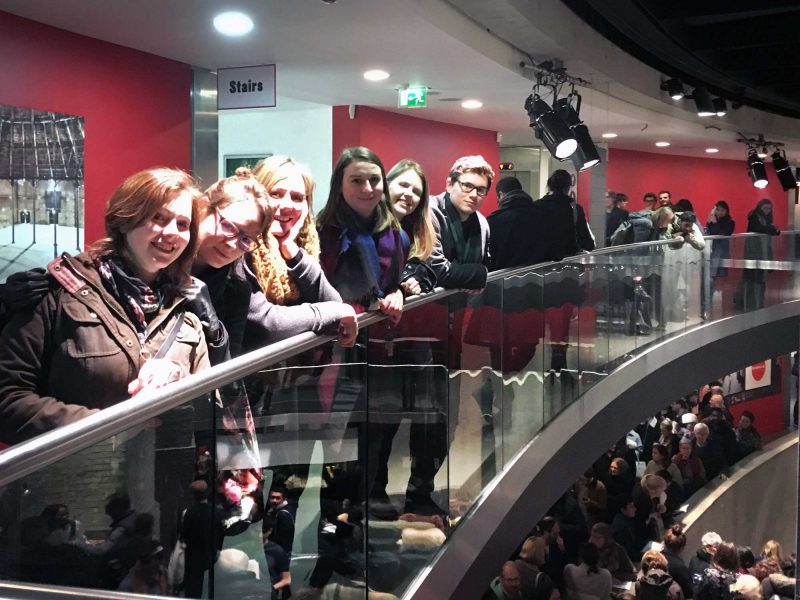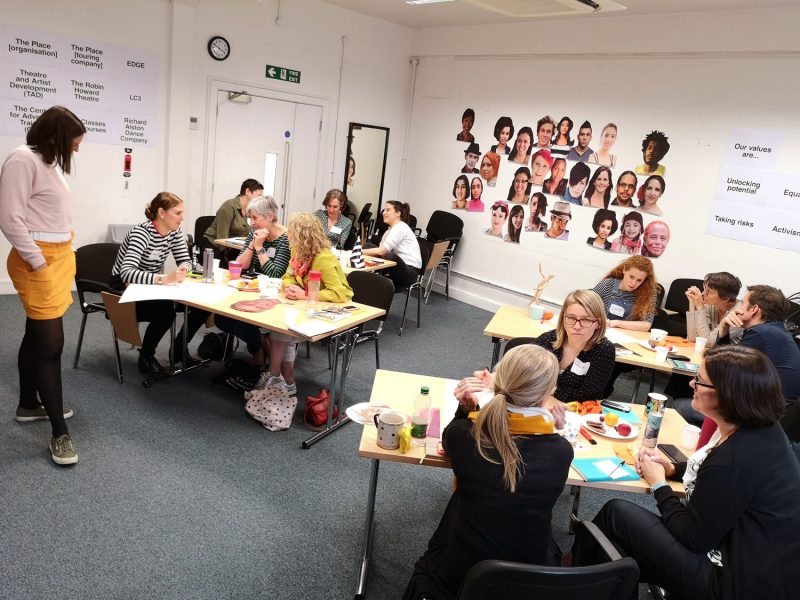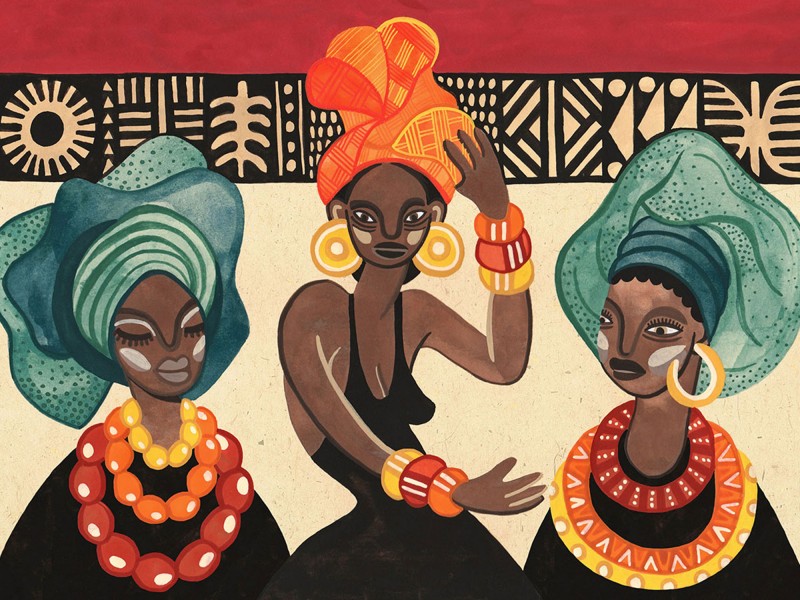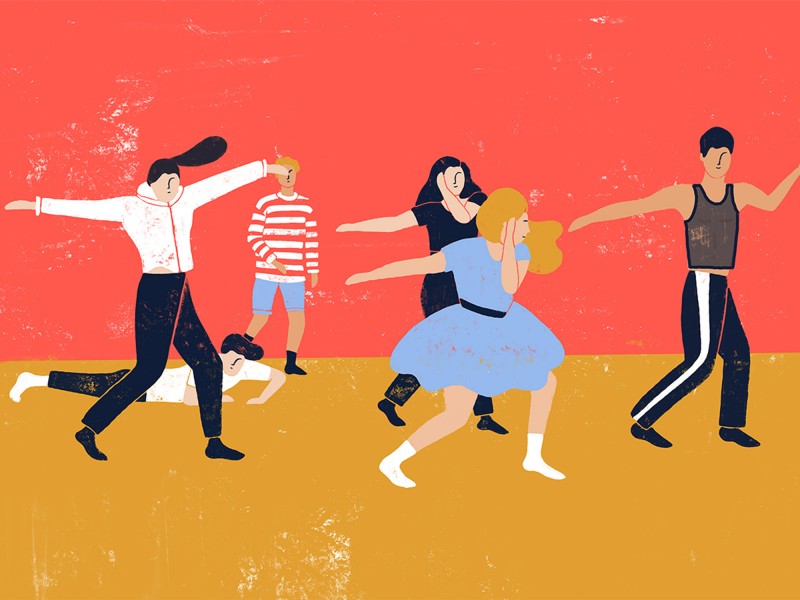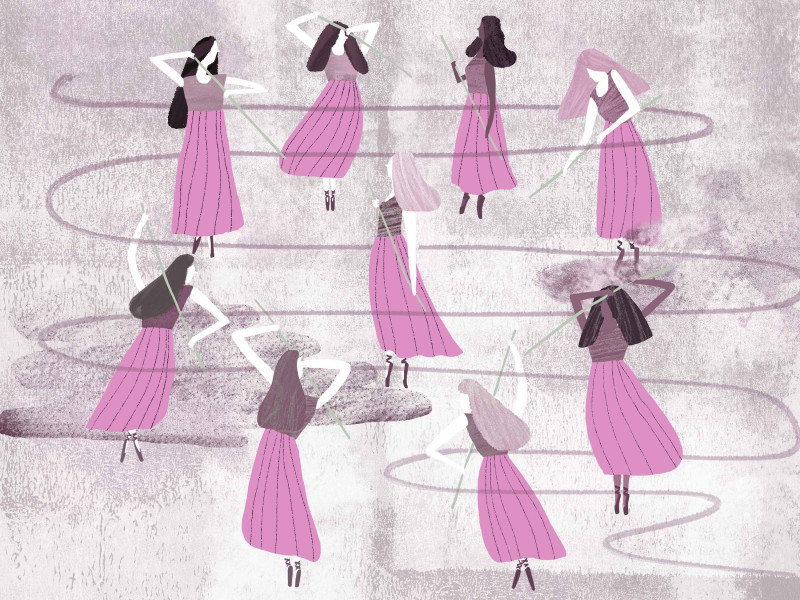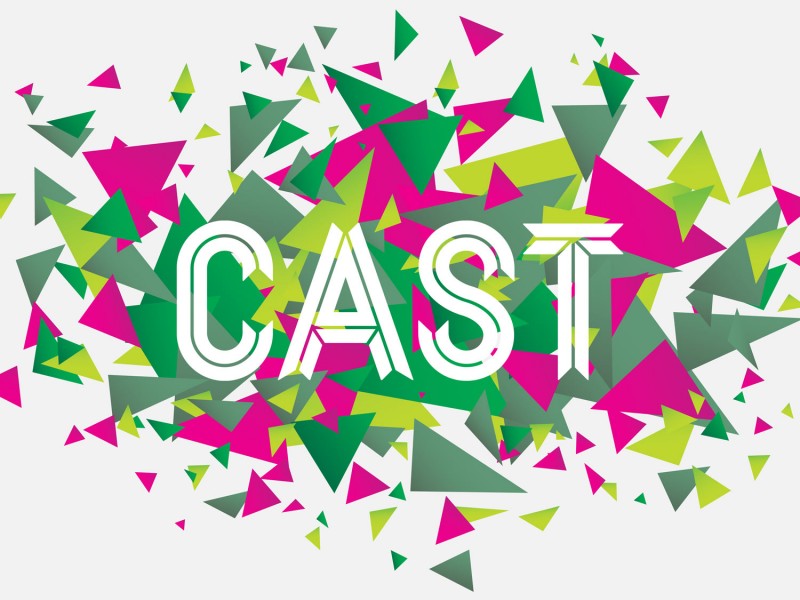Our October Cog night took us to Gary Clarke Company’s ‘Wasteland’ at The Place. Ed gives his account of this striking dance show.
Gary Clarke Company’s Wasteland at The Place
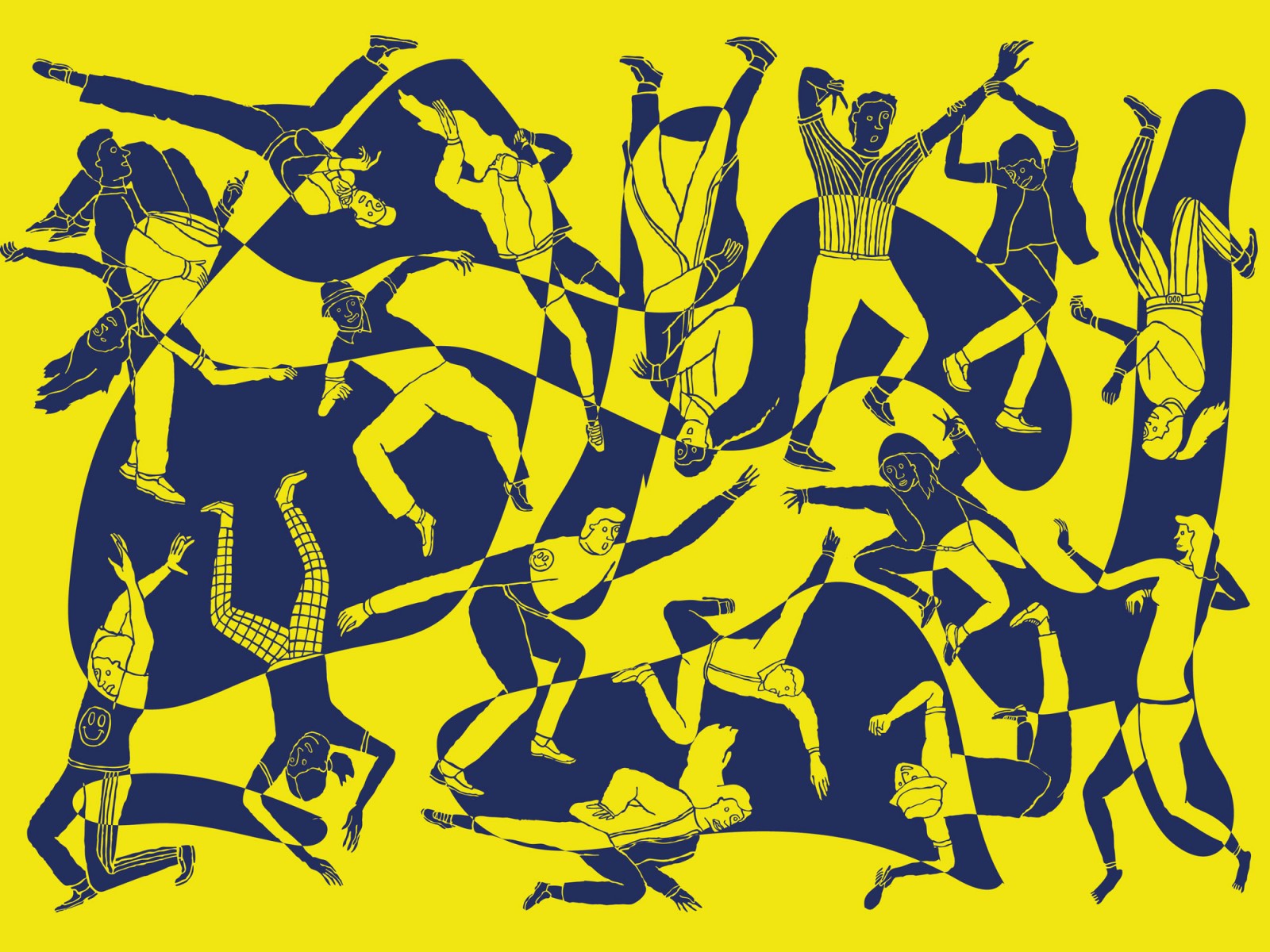
The last (and first) time I visited The Place was in early 2016. Much has changed since then.
I have joined the Cog team as Studio Manager. And we have worked on a very exciting rebrand for the dance venue and school, in time for their 50th anniversary.
Returning three years after my first visit, October’s Cog Night opened my eyes to dance’s capacity for profound spectacle. It left me eager to see more.
We made our way over to Euston from Greenwich, excited to see the show and to see the visual identity resplendent around the theatre.
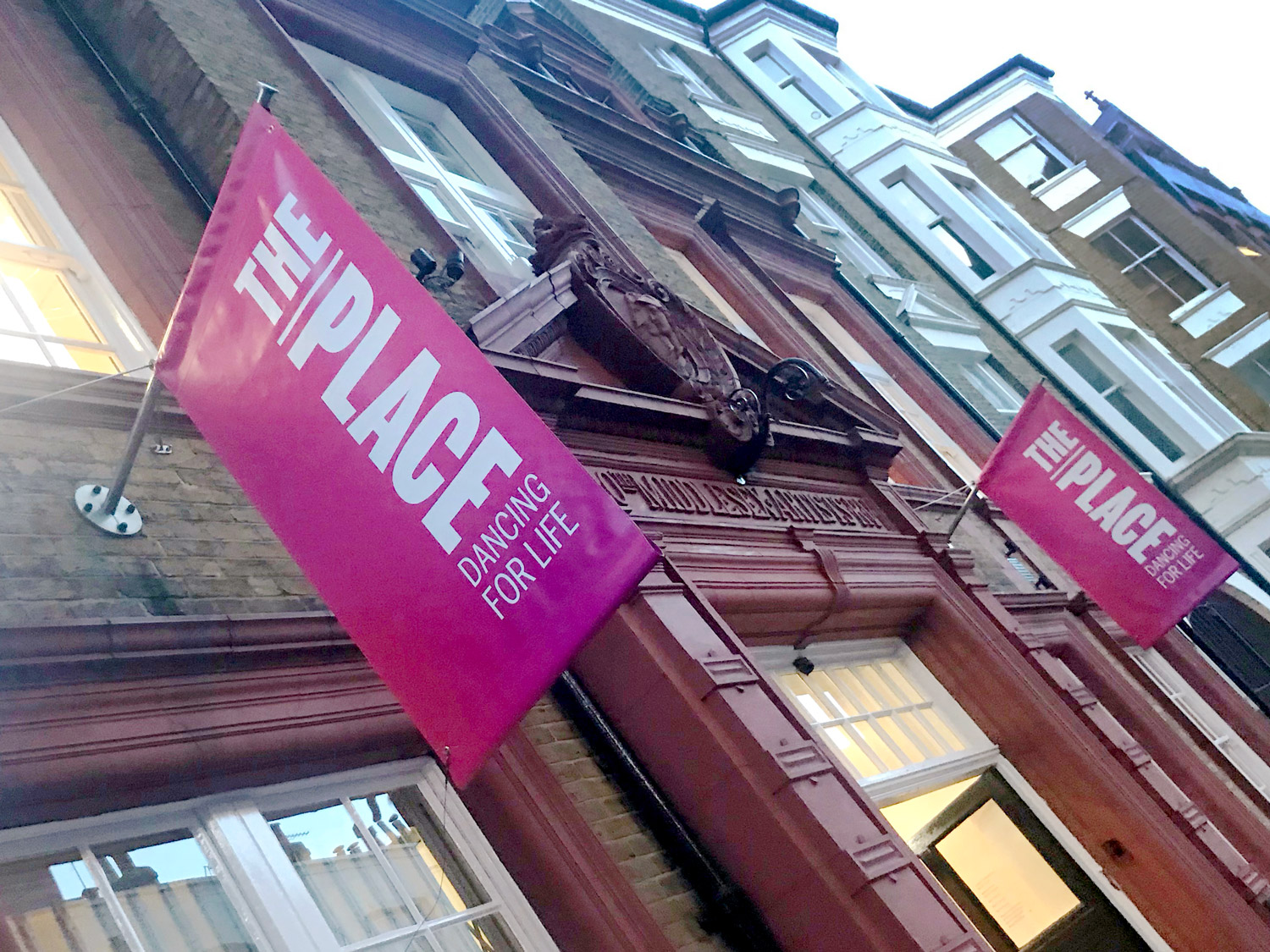
Newly designed flags, hanging in the front of the building at The Place.
After a particularly good meal at The Place’s cafe (and very reasonably priced it was too!), and a few pre show drinks, we headed into the auditorium.
I didn’t know what to expect of Wasteland. A sequel to Clarke’s previous show Coal which examined the political battles of the 1984/5 miners’ strike. Wasteland sets out to examine the pain and upheaval caused by pit closures, and the vitality of a younger generation carving out an emerging rave scene.
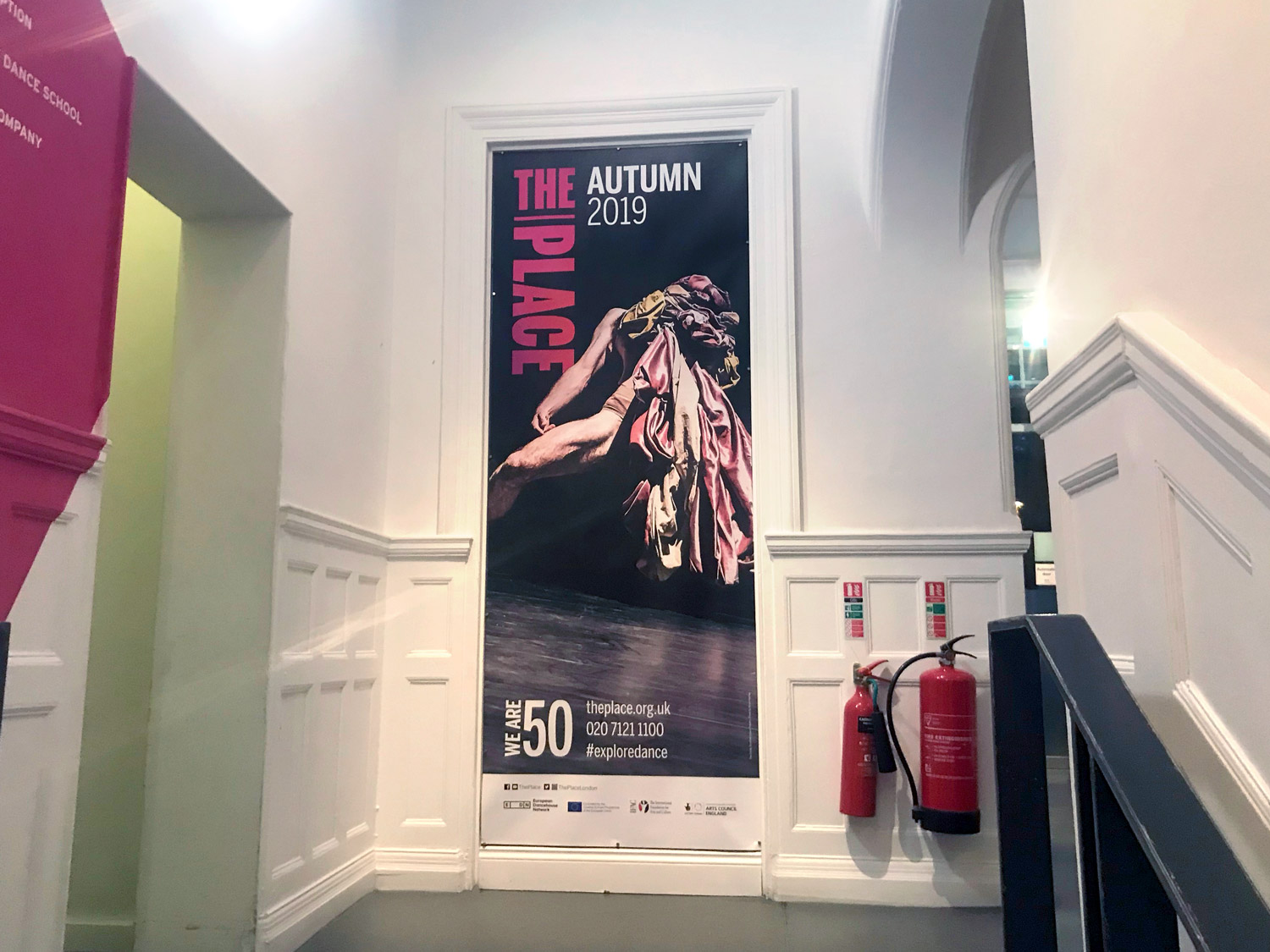
The new visual identity, looking wonderful on a banner in the venue.
As a newcomer to the world of dance I was struck by how accessible this show was. It seemed to hang on a contrast between movement and stillness. For large swathes of the show The Last Miner sits in a small living room set in the middle of the stage, whilst his son finds purpose and community at a series of raves.
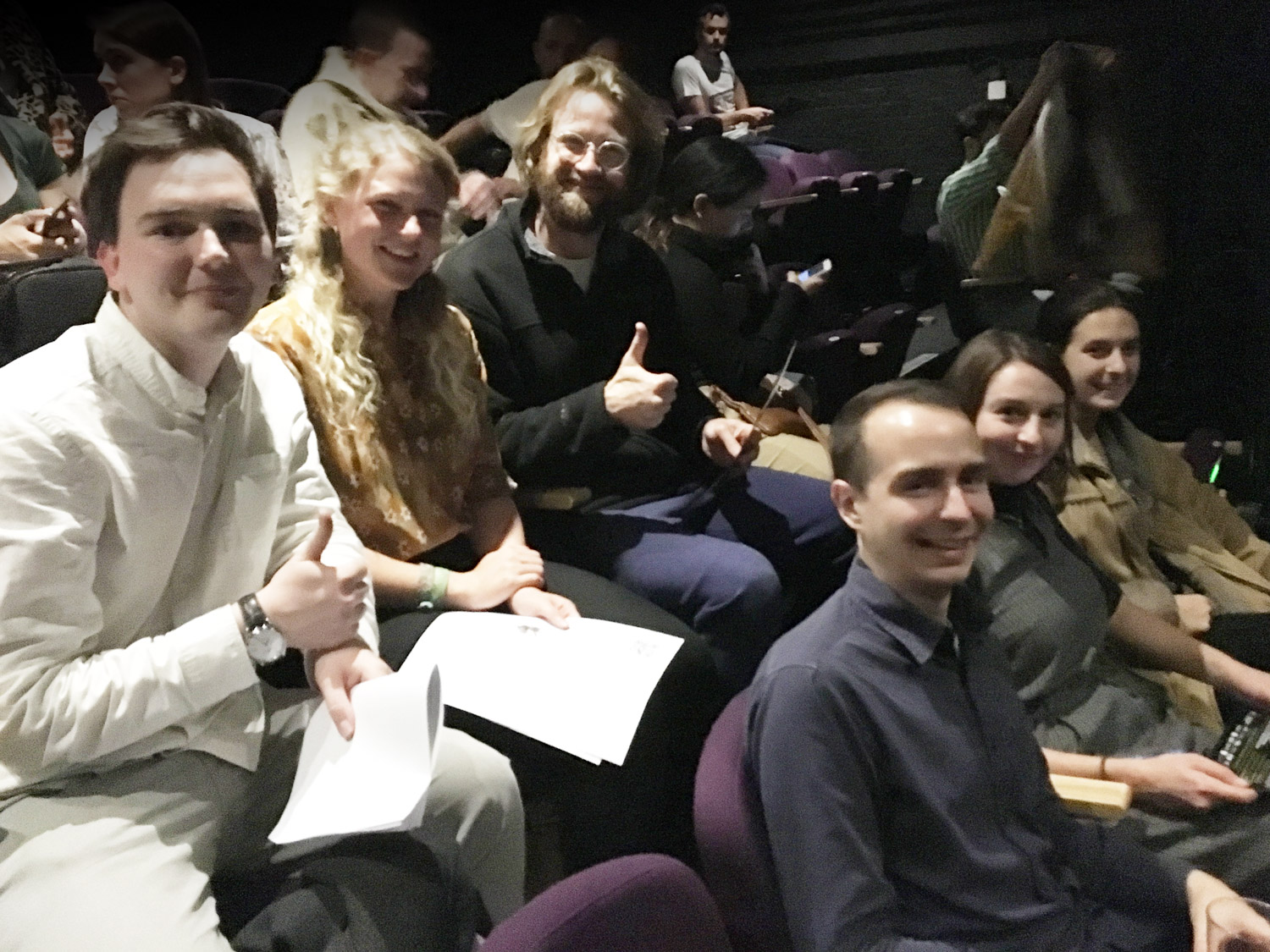
Some of the Cog team, in their seats.
The show was punctuated by a series of stunning set piece rave sequences – amazing feats of endurance made to seem effortless and natural. In the programme notes to the show, Gary Clarke writes that he would not be the artist and choreographer he is today without the birth of rave culture, a statement which was borne out by the urgency and lyricism of the rave choreography.
Although the rave sequences were at the crux of the show, Clarke adeptly avoided making Wasteland a one note rave showcase. From a surprisingly tender fight sequence, between a father and son, to a stoic chorus of dispossessed miners, Wasteland brought an eclectic mix of music, choreography, set, and projection together to tease out its poignant contrasts. Charles Webber’s lighting and video design was a particular highlight of mine, especially during the final sequence of the show.
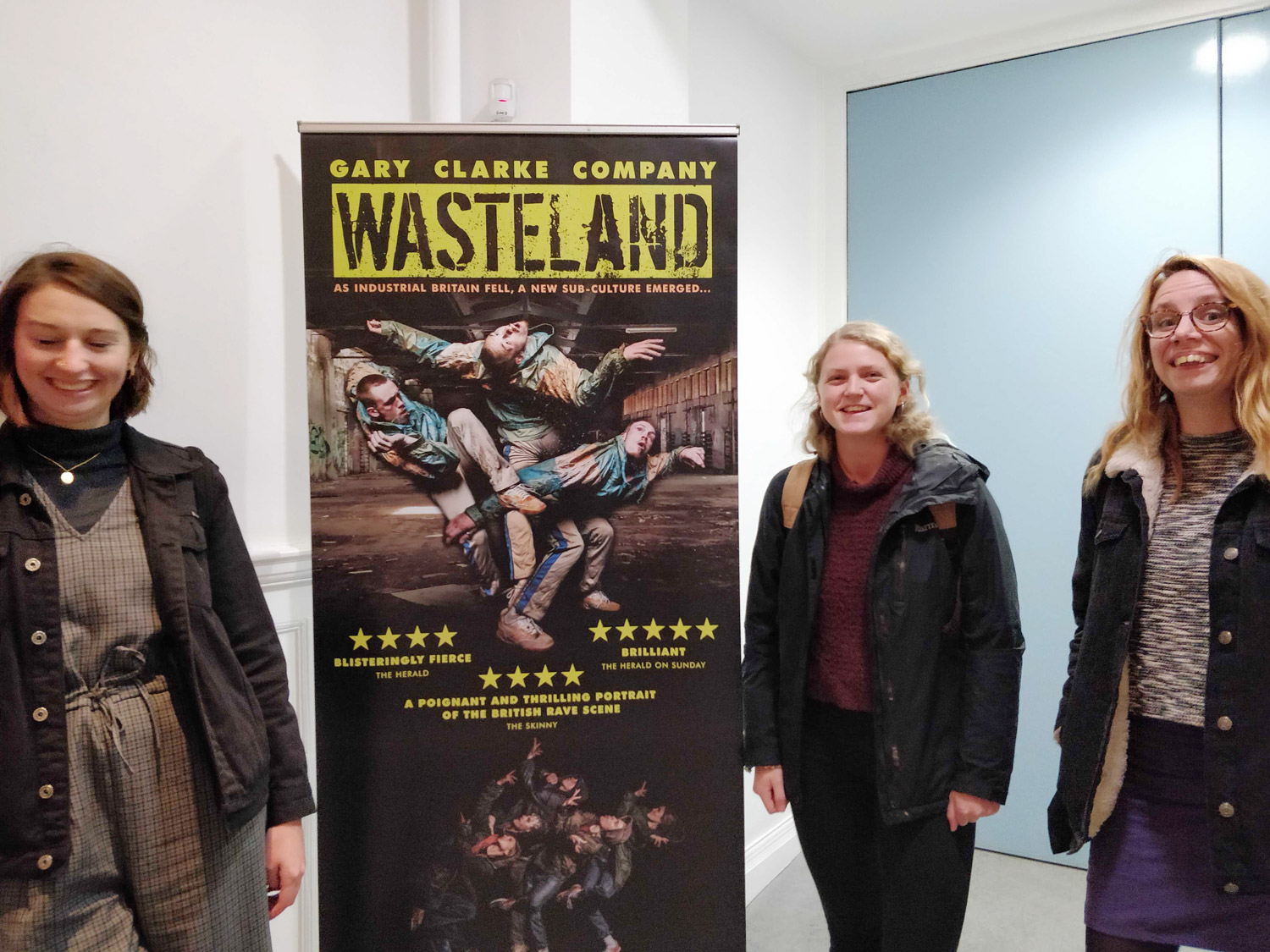
Anna, Daisy and Jen, beside a Wasteland pull-up banner
It was in its most pronounced moments of contrast that Wasteland was at its most effective. The stillness of one generation heightened the energy of another, the ecstasy of the night before is thrown into relief by the morning after, and the sense of community among one group make the isolation of another all the more pointed.
I don’t think Wasteland convinced me to go to more raves, but the evening definitely made me want to see more at The Place. I don’t think I should wait another three years.
Illustration by Serafine Frey for our Cultural Calendar.



